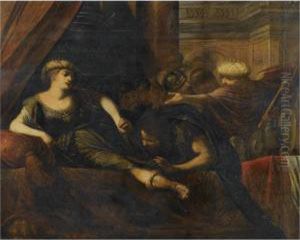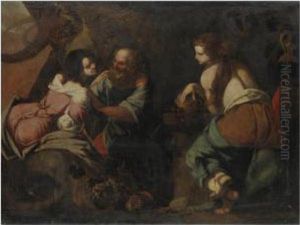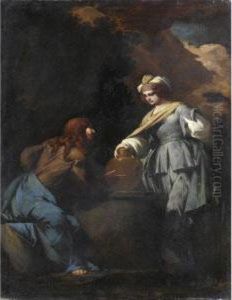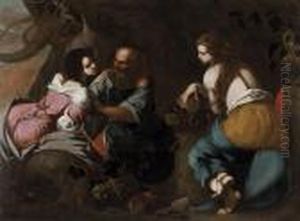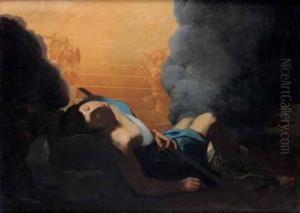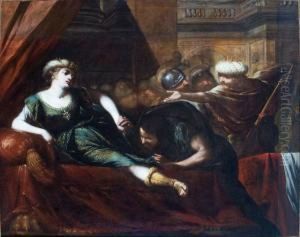Giovan Battista Spinelli Paintings
Giovan Battista Spinelli was an Italian painter associated with the Baroque period, born around 1613 in Naples, a city that was then part of the Spanish Empire. Not much is known about his early life or training, but he is thought to have been a pupil of the celebrated Neapolitan painter Massimo Stanzione. His work was also influenced by other leading artists of his time, such as Guido Reni, whose classical style is reflected in Spinelli's paintings.
Spinelli's career was primarily based in Naples, which during the 17th century was a vibrant center for the arts. The city was home to many skilled artists, and Spinelli's work stood out for its strong use of color and light, typical of the Neapolitan Baroque style. He painted religious subjects for churches and also produced mythological and allegorical works. His paintings often featured dramatic lighting effects and a vivid sense of movement, which contributed to the emotional intensity of his scenes.
Despite his talents, Spinelli did not achieve the same level of fame as some of his contemporaries, such as Jusepe de Ribera or Luca Giordano. Nevertheless, his works were appreciated by local patrons, and he received commissions from various religious institutions. His painting 'The Martyrdom of St. Ursula' is considered one of his masterpieces and showcases his ability to depict complex narratives with emotional depth.
Giovan Battista Spinelli's death date is not precisely known, but he is believed to have died around 1659. His legacy lives on in the collections of various museums and churches, particularly in the Naples area. While not as well-known as some of his contemporaries, Spinelli's contribution to the Baroque movement in Italy remains significant, and his works continue to be studied for their stylistic qualities and cultural context.
